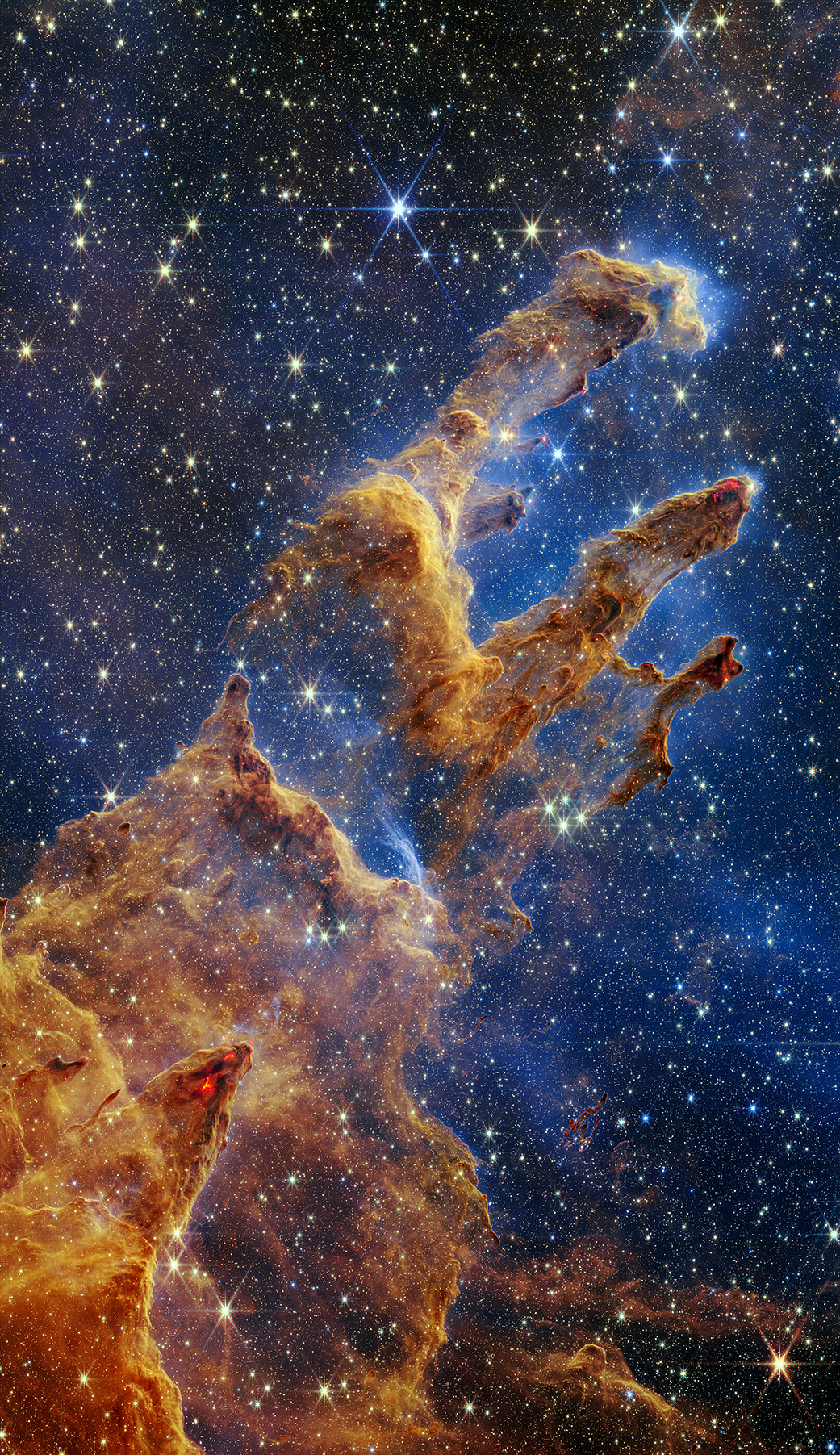Our James Webb Space Telescope has captured a new image of the famous Pillars of Creation—first imaged by the Hubble Space Telescope in 1995—that reveals new details about the region. The three-dimensional pillars look like majestic rock formations but are far more permeable. These columns are made up of cool interstellar gas and dust that sometimes appear semi-transparent in near-infrared light.
Webb’s new view of the Pillars of Creation will help researchers revamp their models of star formation by identifying far more precise counts of newly formed stars, along with the quantities of gas and dust in the region. Over time, they will begin to build a clearer understanding of how stars form and burst out of these dusty clouds over millions of years.






























